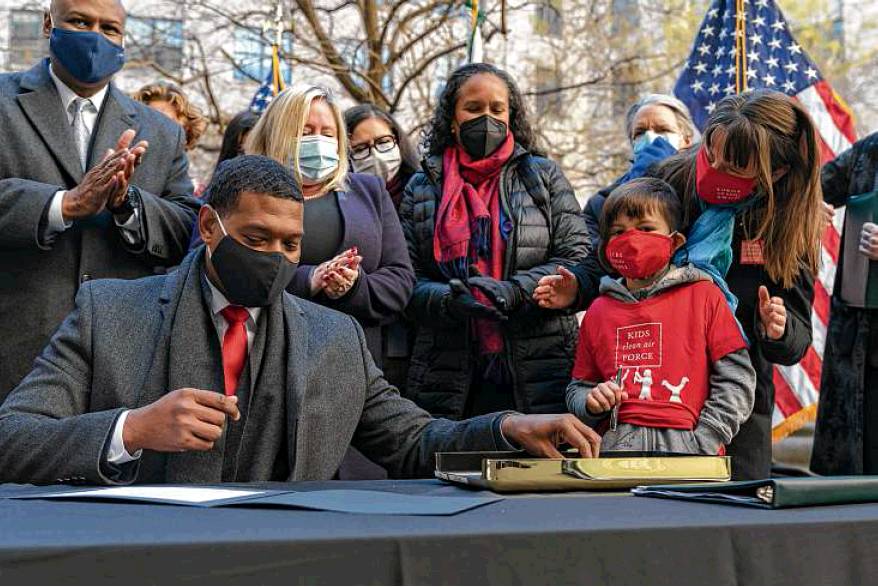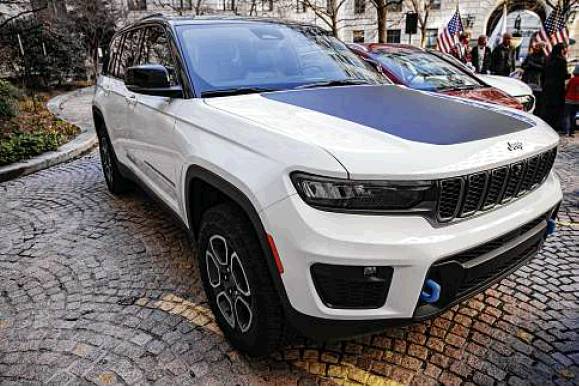ENERGY TRANSITION
EPA strengthening standards on car and truck emissions
Rules would increase fuel economy to 40 miles per gallon by 2026
By James Osborne STAFF WRITER
WASHINGTON — The Environmental Protection Agency announced tough new emissions standards on cars and light-duty trucks Monday, putting the U.S. auto industry on notice it needs to rapidly shift to electric vehicles.
Set to take effect next year, the new standards would raise fuel economy to 40 miles per gallon by 2026, reducing carbon dioxide emissions by 5 to 10 percent a year. Under existing emissions standards, vehicles would have been required to reach the equivalent of 32 miles per gallon.
The new standards come as President Joe Biden seeks to put the United States on the path to net-zero greenhouse gas emissions by midcentury. Scientists have warned that the world faces environmental catastrophe unless it slashes carbon emissions to net-zero over the next 30 years.
“We followed the science, we listened to stakeholders and we are setting robust and rigorous standards that will aggressively reduce the pollution that is harming people and our planet — and save families money at the same time,” EPA Administrator Michael Regan said.
The move is likely to cut into the market for petroleum-based fuels in the United States and Europe. The oil sector opposed the tightening in emissions standards, arguing it unfairly targeted emissions from the oil sector over other industries, said Ron Chittim, vice president of downstream policy at the American Petroleum Institute.
“While API and our member companies support transportation initiatives that both reduce emissions and ensure affordable vehicle choices for Americans,” he said, “the best way to accelerate U.S. climate progress is through an economywide carbon price policy rather than costly market mandates.”
Oil companies including Exxon Mobil and Chevron argue the most effective way to address climate change is through a carbon tax that applies to all emissions, regardless of their source. The idea is to use economic incentives, rather than mandates, to get companies to cut emissions.
The transportation sector is responsible for 29 percent of U.S. emissions. But vehicles’ contribution to climate change remains a point of contention in Washington.
Higher mileage
Through an agreement with most of the world’s largest auto manufactures, former President Barack Obama sought to cut emissions through tougher vehicle efficiency standards — known as corporate average fuel efficiency, or CAFE, standards. The agreement would have required passenger cars and trucks to get more than 50 miles a gallon on average by 2025.
But in 2020, those standards were undone by former President Donald Trump, who set 37 miles per gallon as the new target for 2025, despite protest from some auto companies. In August, the Biden administration announced it would announce new CAFE standards by April.
Monday’s EPA announcement comes as auto manufacturers are rolling out new electric models, with plans at companies including GM and Ford to go carbon-zero by 2035 by producing only electric vehicles. While electric and plug-in hybrid vehicles represent only 7 percent of U.S. auto sales, Regan said he expected those sales would reach 17 percent by 2026.
Auto executives have made clear to the Biden administration that manufacturing electric vehicles remains more costly than traditional petroleum-fueled vehicles. They say meeting the administration’s targets will require the expansion of rebates for consumers to offset higher EV prices.
“EPA’s final rule for greenhouse gas emissions is even more aggressive than originally proposed, requiring a substantial increase in electric vehicle sales,” said John Bozzella, president of the Alliance for Automotive Innovation, which represents major manufacturers including GM and Toyota. “Achieving the goals of this final rule will undoubtedly require enactment of supportive governmental policies — including consumer incentives, substantial infrastructure growth, fleet requirements, and support for U.S. manufacturing and supply chain development.”
Manchin again
Congress included $7.5 billion for charging stations in the $1.2 trillion bipartisan infrastructure bill that was recently approved. But the Biden administration is facing an uphill battle on buyer incentives after Sen. Joe Manchin, D-W.Va., said Sunday he would not support the president’s $1.75 billion Build Back Better legislation, which included an increase in the tax credits for electric vehicles from $7,500 to $12,500.
The EPA, however, still believes it can reach the 17 percent sales target by 2026 without the increase in tax credits, Regan told reporters Monday.
“When we look at the technical analysis, we believe it’s still affordable and achievable,” he said. “That’s not to say we’re not going to fight for the incentives.” james.osborne@chron.com


